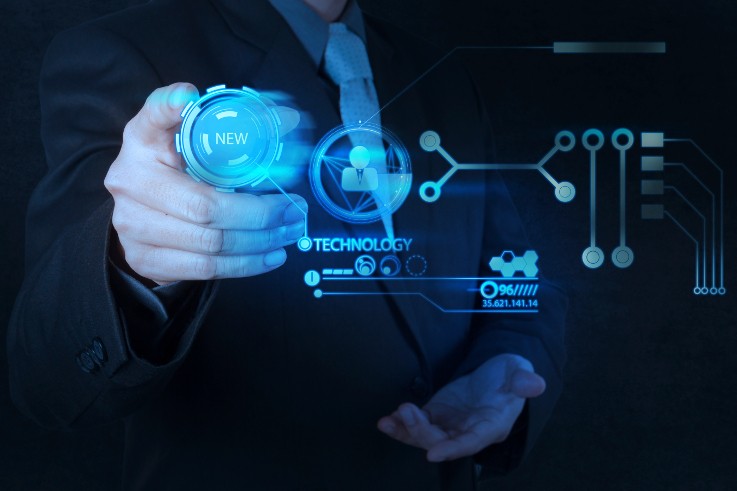
Considering upgrading SAP Hybris 5.x to 6.x? Read this first.

Companies consider upgrading their software for many reasons. Whether they decide to upgrade to take advantage of new functionality, address platform defects, or maintain platform support from the vendor, each company that upgrades can improve their chances of success by following the guidelines below for upgrading from SAP Hybris 5.x to 6.x.
Guidelines for Upgrading
There are three types of upgrades to consider: Patch, Minor, Major. Patches are typically released when a software company exposes a platform defect with a recent major or minor release and as such, must release a patch to address the defect. Since patches are often isolated they typically take less time to deploy and can generally be released in a sprint. Minor releases are typically releases that contain functional enhancements, some net-new functionality, and limited architectural modifications. Major releases typically contain a significant amount of functional enhancements, net-new functionality and sometimes major architectural modifications. Given the breadth and complexity of major and minor releases it is important to consider the guidelines below to ensure success.
Treat Upgrades as Separate Projects: Upgrades are often very complex and involve broad components of your implementation. Treating them as a formal project will ensure that appropriate resources are dedicated to the upgrade and reduce the chances of it being hastily deployed, thereby introducing regression defects.
Test, Test, Test: Many upgrades contain enhancements that impact the entire platform or major components of the platform. It is critical that you evaluate the need for a full regression test and consider a load test before releasing an upgrade. In scenarios where the upgrade has an isolated impact, it is still important to regression test everything that interacts with the isolated functionality.
Avoid Too Many Moving Parts: The more confounding variables that are introduced the more difficult it is to determine whether a bug is the result of the upgrade or something else. This can be avoided by isolating the upgrade and minimizing any feature enhancements that are implemented in conjunction.
“Run the Business” In Parallel: Major upgrades often take many months to implement and minor upgrades typically take multiple sprints. As such, there is a good chance that you’ll need to deploy your own hot-fixes in parallel to the upgrade. Consider isolating your “Run-the-Business” releases from the upgrade. This will eliminate dependencies and lower the potential for confounding variables. You may also be resource-constrained at this time running parallel tracks of work. To prevent degradation of work-product consider asking the business to hold off on feature requests during the upgrade period so that the implementation team can focus on the upgrade and hot-fixes. Also ensure that you’ve properly isolated your “run the business” environments from your upgrade environments and have release management processes in place to accommodate two separate deployment paths.
What MUST be Completed for an SAP Hybris 5.x to 6.x Upgrade?
Each hybris release contains a myriad of features and functionality that are documented in detail on the hybris Wiki. We have captured those modifications that MUST be incorporated for each release in hybris version 5 and version 6 to date. These are the minimum items that you will need to consider when completing your upgrade. Once the upgrade has been completed, functional enhancements can be prioritized as “fast-follows” to the initial upgrade.
Key Considerations
Note: The links to the SAP Hybris Release Notes below require an authenticated hybris Wiki user to view.
Release 5.0.1: None of relevance.
Removed MySQL JDBC Connector: The MySQL JDBC Connector has been removed so if you’re using MySQL you’ll need to download and add the connector back into the platform.
Removed Oracle JDBC Connector: The Oracle JDBC Connector has been removed so if you’re using Oracle you’ll need to download and add the connector back into the platform.
Release 5.0.4: None of relevance.
hybris Server Upgraded to Tomcat 7.0.41: The hybris server is now based on Tomcat 7.0.41. Any customizations to the application server should follow this version.
Solr Upgraded to version 4.5: Solr has been upgraded to 4.5 to accommodate feature enhancements and fix bugs. If running Solr as standalone application you will need to upgrade to Solr version 4.5.
Release 5.2: None of relevance.
Release 5.3: None of relevance.
Support for SAP Licenses: There’s a good chance that SAP has encouraged you to migrate to their new licensing framework. In version 5.4 hybris accommodates SAP Licenses. Upgrading to any version 5.4 or greater is a good time to make the transition.
Release 5.5: None of relevance.
Upgraded to Java 8 from Java 7: This version will not compile and run on Java 7. As such, you’ll need to upgrade to Java 8 and make sure your customizations compile on Java 8.
Upgraded to Spring 4 from Spring 3
Release 5.6: None of relevance.
Final release of hyend2 (Endeca Search and Navigation Module): Has reached End-of-Life and will only be supported through the end of 2016.
Final release of hybris Print Module: The Print Module has reached End-of-Life and will only be supported through mid-2017. It has been replaced with an integration to Print.
Solr upgraded to version 5.3. Solr has been upgraded to 5.3 to accommodate feature enhancements and fix bugs. In addition, hybris no longer supports the embedded solr server and requires a transition to standalone Solr on version 5.3
B2B Accelerator Now an AddOn: The B2B Accelerator has been moved to an AddOn and common functionality moved to core commerce layer. As such, if relying on the functionality that was moved to the core commerce layer, you’ll likely need to refactor your code to accommodate this change.
Release 6.0: None of relevance.
Other Considerations
Relevancy depends on the nature of your implementation including whether or not your business is B2B, utilizes Solr, utilizes Endeca.
If you have customized the cockpits you may need to review the release notes to determine impact on your customizations.
If you are utilizing an AddOn that was updated with a given release, you’ll also need to evaluate the AddOn to determine if any modifications are required.
Any customizations to the core platform (e.g. outside of your custom extensions) will be overridden with an upgrade due to the nature of the hybris upgrade process. Since it is not best practice to customize the platform directly, consider adding these customizations to your custom extensions.
So What?
SAP Hybris upgrades can be very complex and often take an extended amount of time to prepare and deploy. Treat an upgrade like a project and eliminate as many moving parts as possible to ensure success. This is especially true when considering an upgrade from hybris 5.x to 6.x as there are a number of major architectural changes to be considered along with a vast amount of feature updates. Following these steps will help optimize the upgrade path and enable quicker return to Business as Usual for your organization.